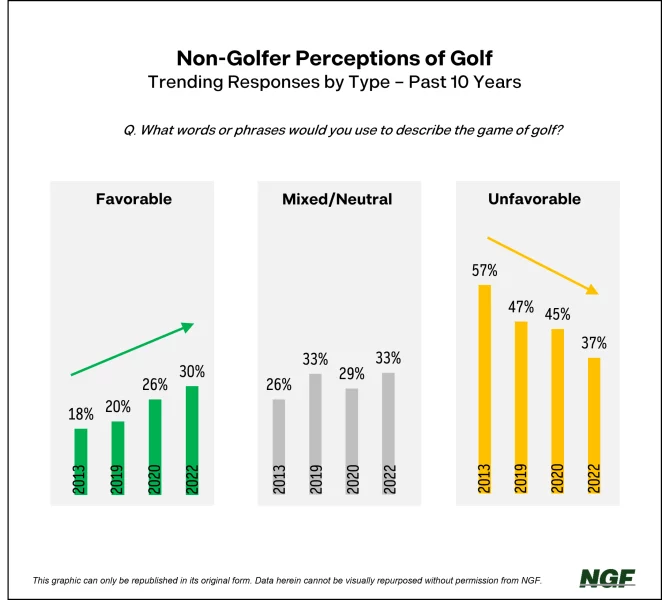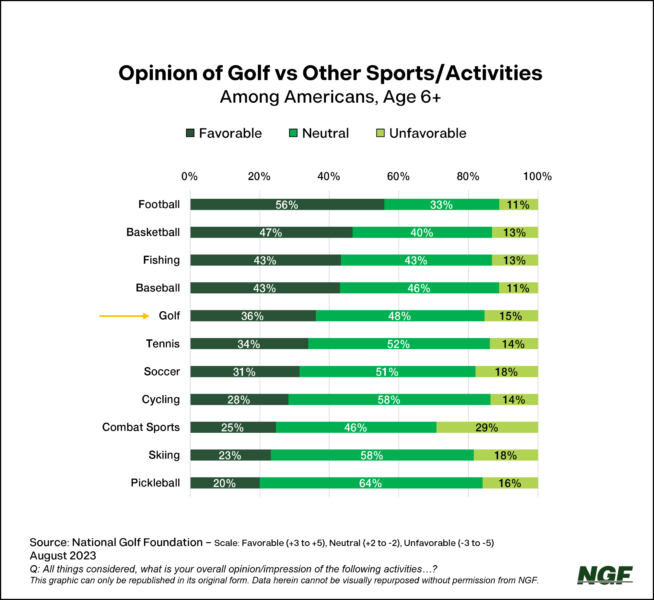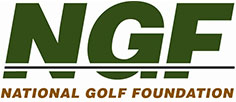JUPITER, Florida – Golf’s benefits were accentuated by the pandemic – physical, mental, and social – with many Americans discovering and rediscovering an interest in the game.
Golf provided a needed escape; an opportunity to get outdoors and in the fresh air, away from lockdowns, and connect with family and friends.
Lately, golf has a more favorable narrative going for it for a variety of reasons: social media, celebrities, the proliferation of many exciting off-course venues, charitable and community impact, and more. And that shift has a positive effect on perceptions of the game.

Consider that a decade ago, 57% of words or phrases that non-golfers used to describe golf were generally unfavorable. Today, about two-out-of-three non-golfers perceive golf positively or at least neutrally. The incidence of negative attitudes has dropped to 37%.
That’s not to say there won’t be detractors. There always will be, no different than other sports and activities.

Golf, while one of the nation’s most popular participation sports, is still played by less than 10% of the population. But it’s notable that even those who don’t play it – yet – are more likely to describe the game as “fun,” “relaxing,” and “outdoors” over “boring,” “expensive,” and “slow.”
Among golfers, almost 60% of young adults (ages 18-34) who play consider golf to be “cool.”
That’s especially interesting given that this age group counts the most on-course golfers – even if they don’t play or spend as much as others – as well as the most off-course participants, and the most total golfers. In addition, this age group is the most highly represented in the latent demand category. When another 6 million-plus young adults are expressing an interest in taking up the traditional, green grass game, you don’t think it helps to have golf considered cool?
Perceptions matter.


